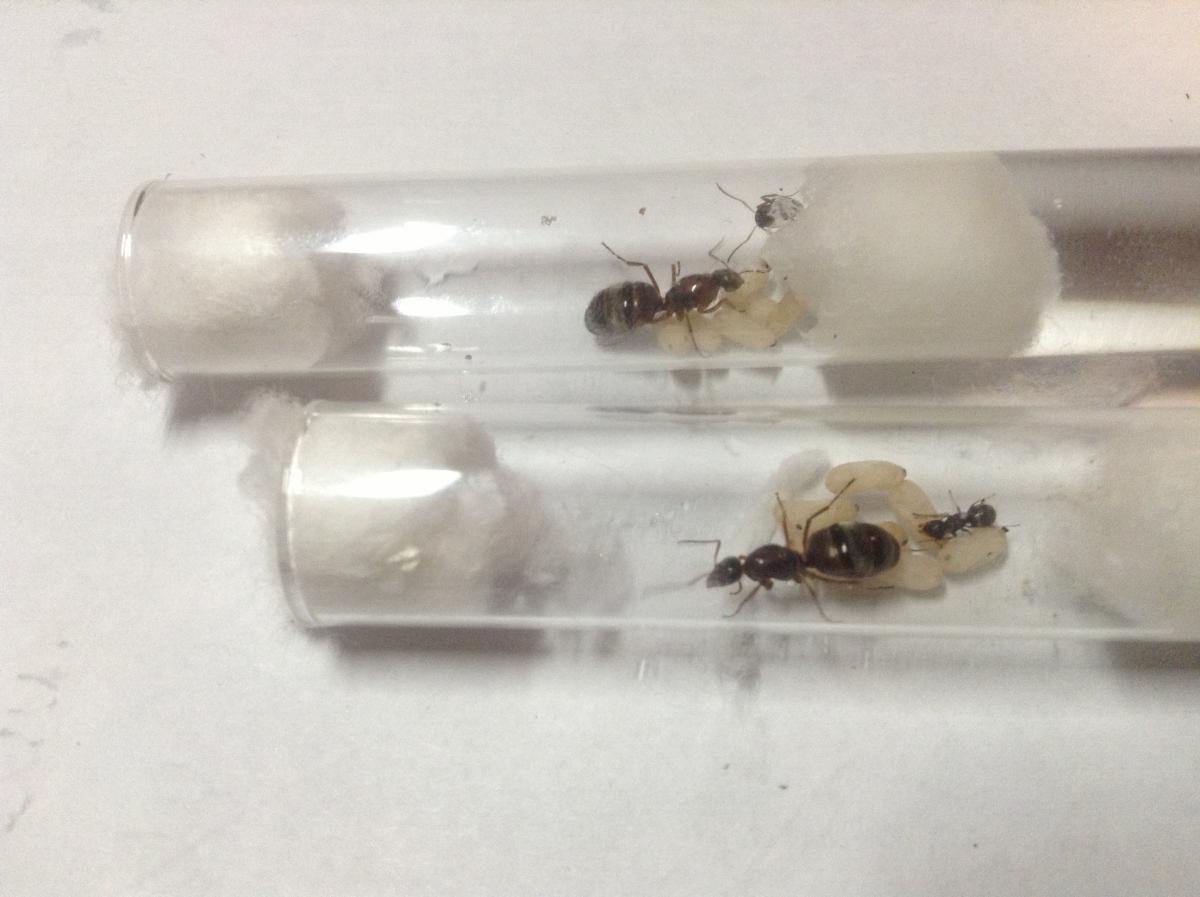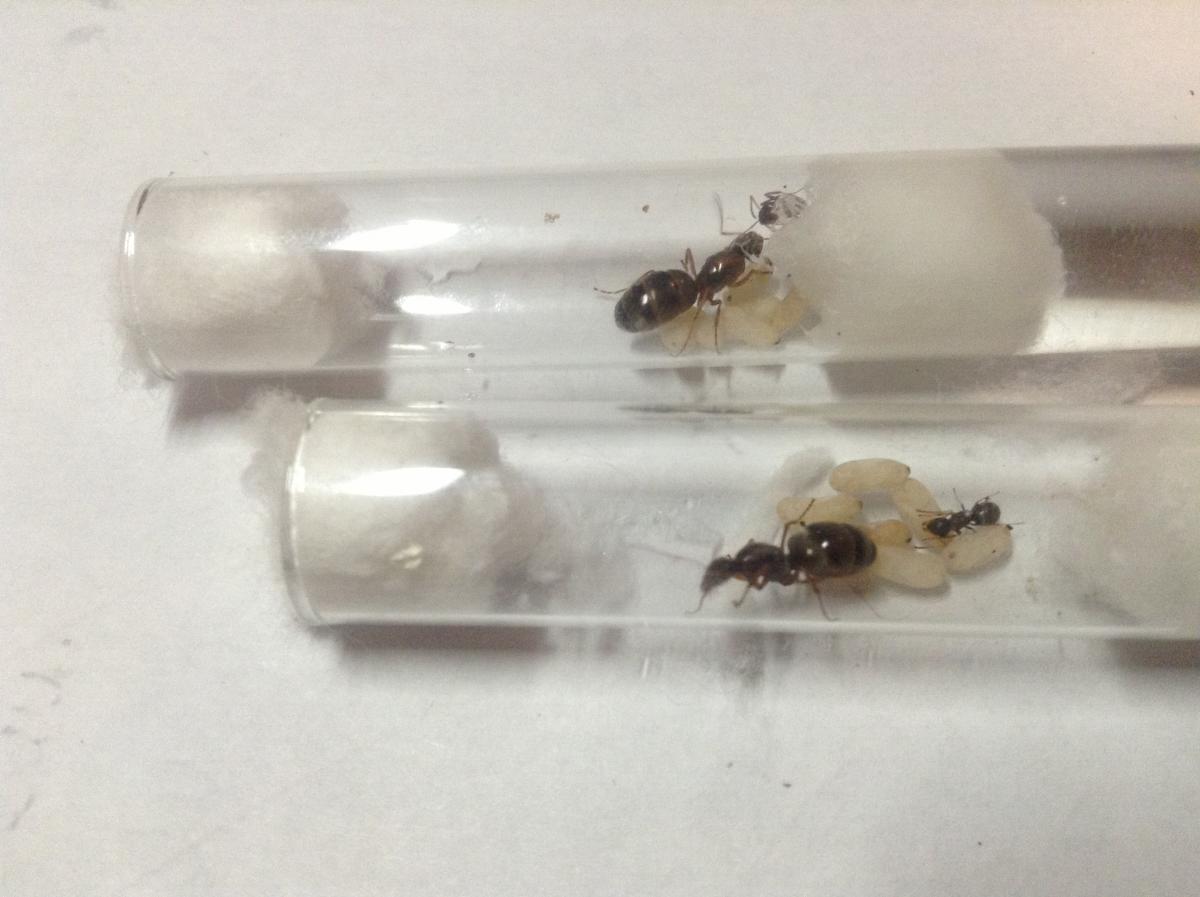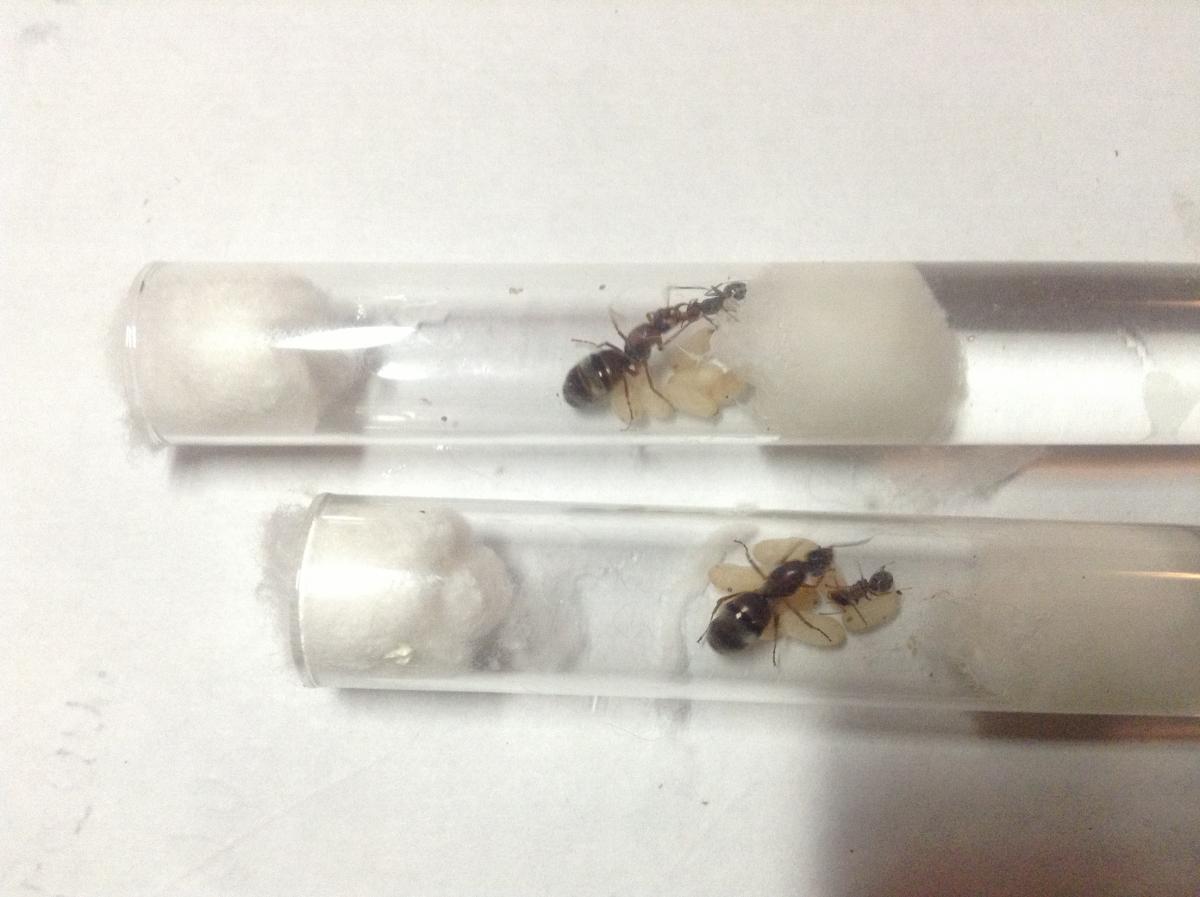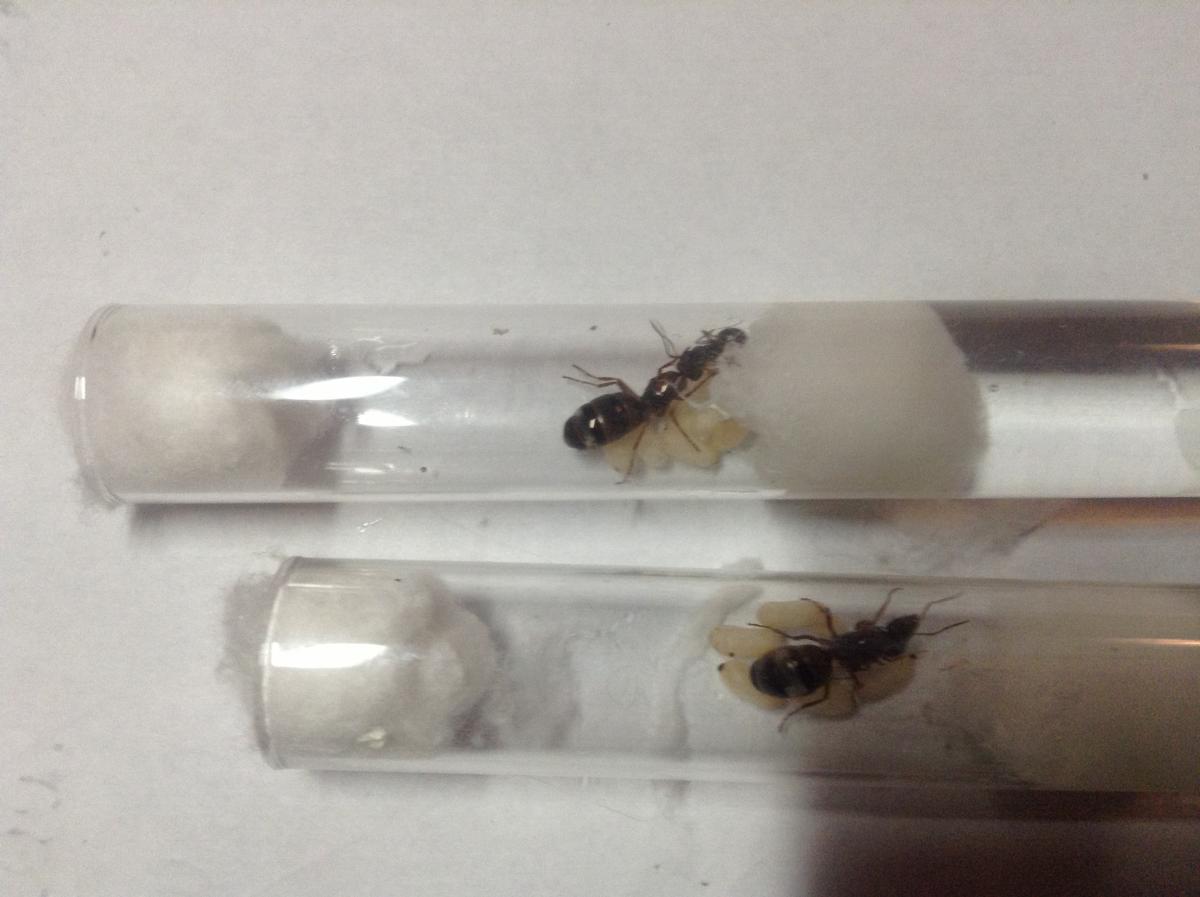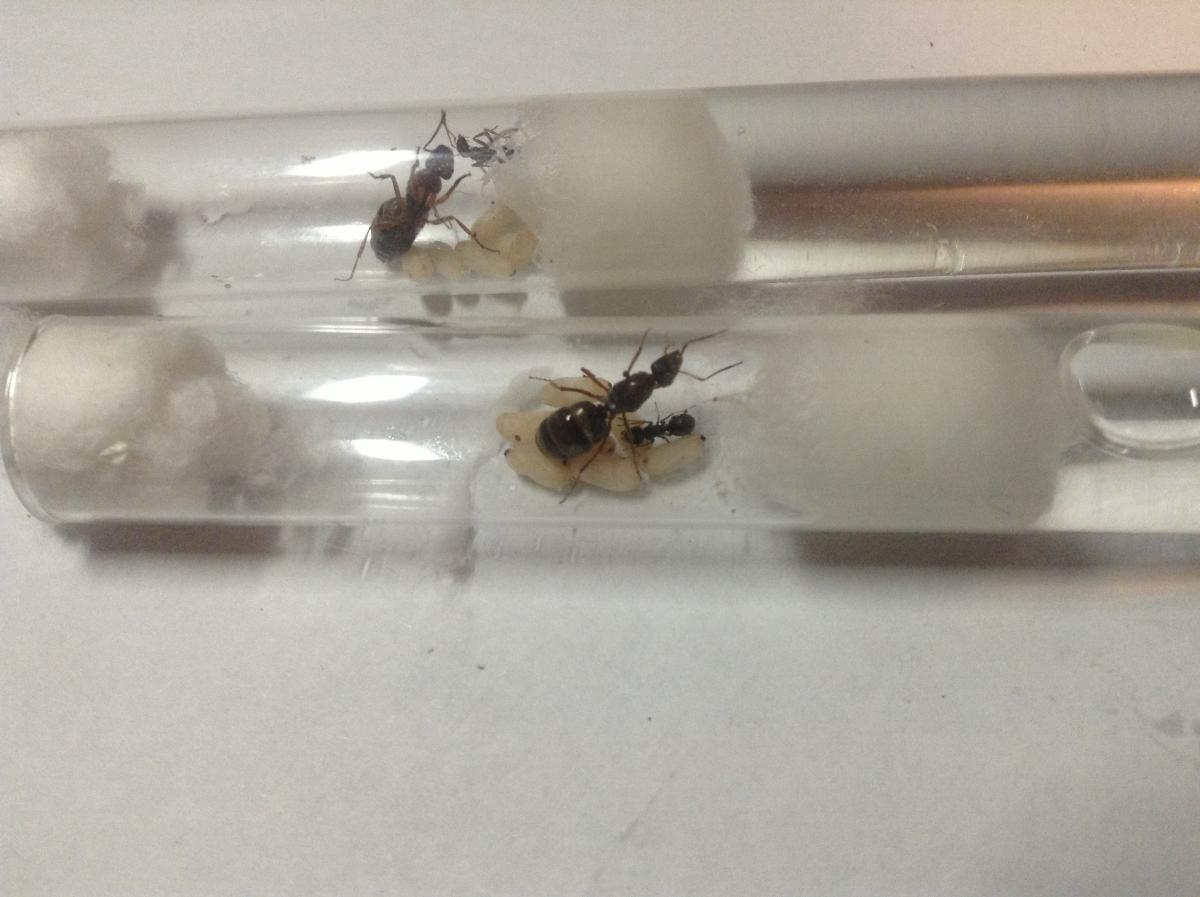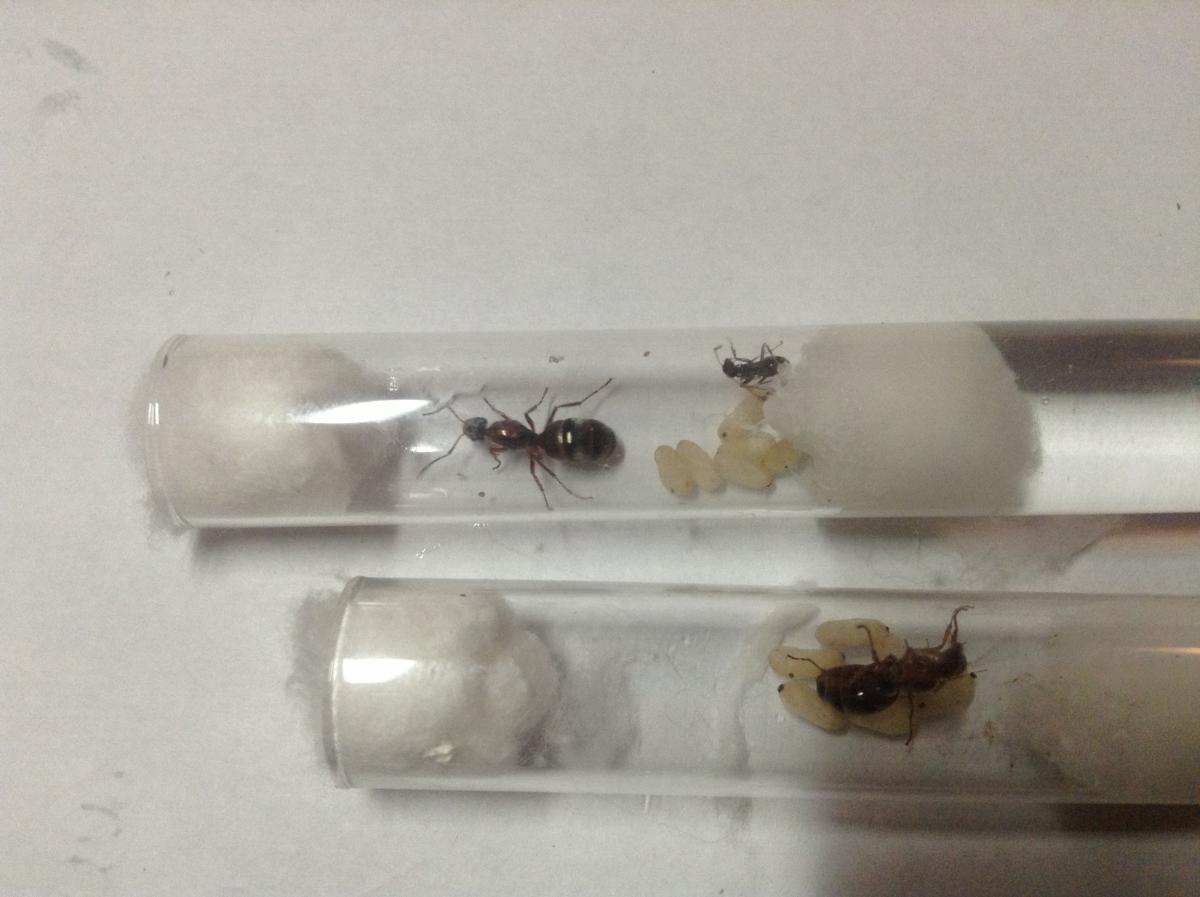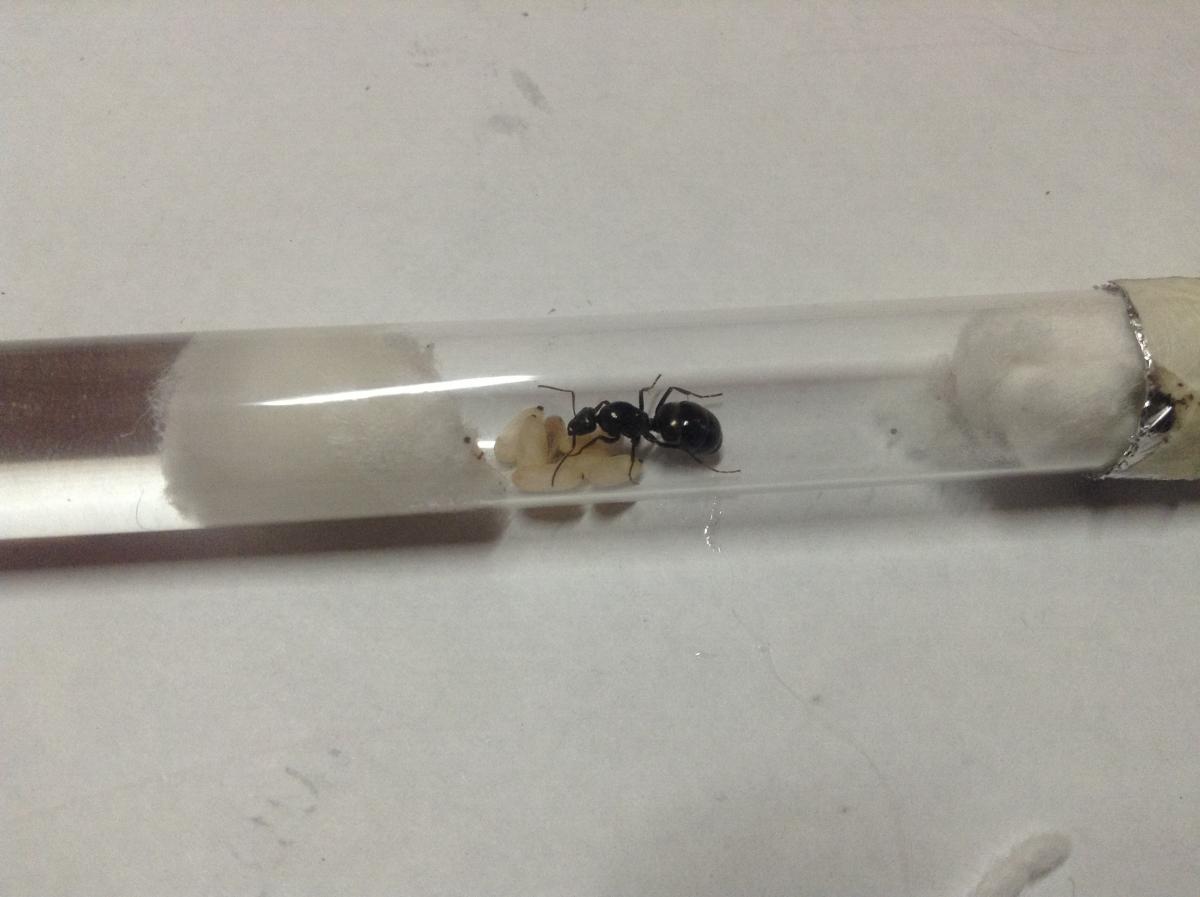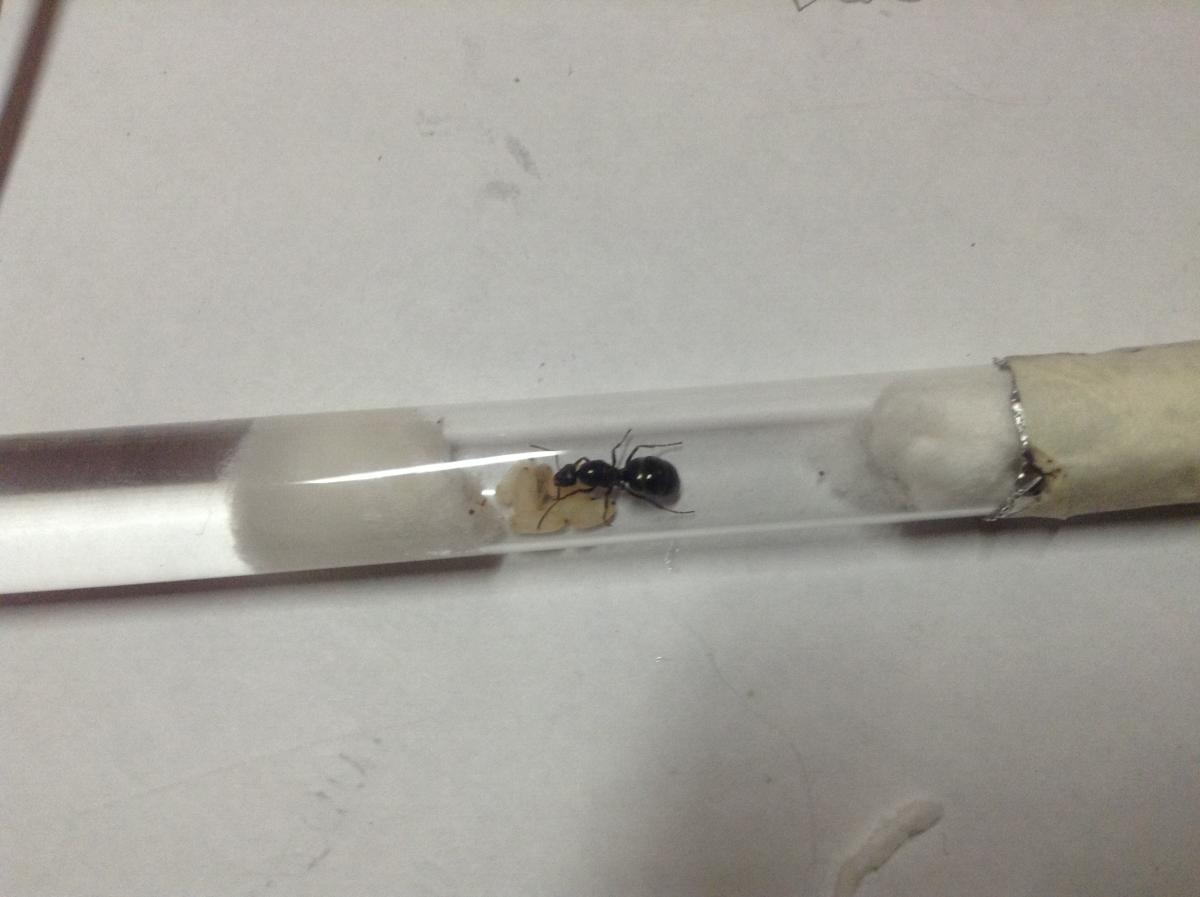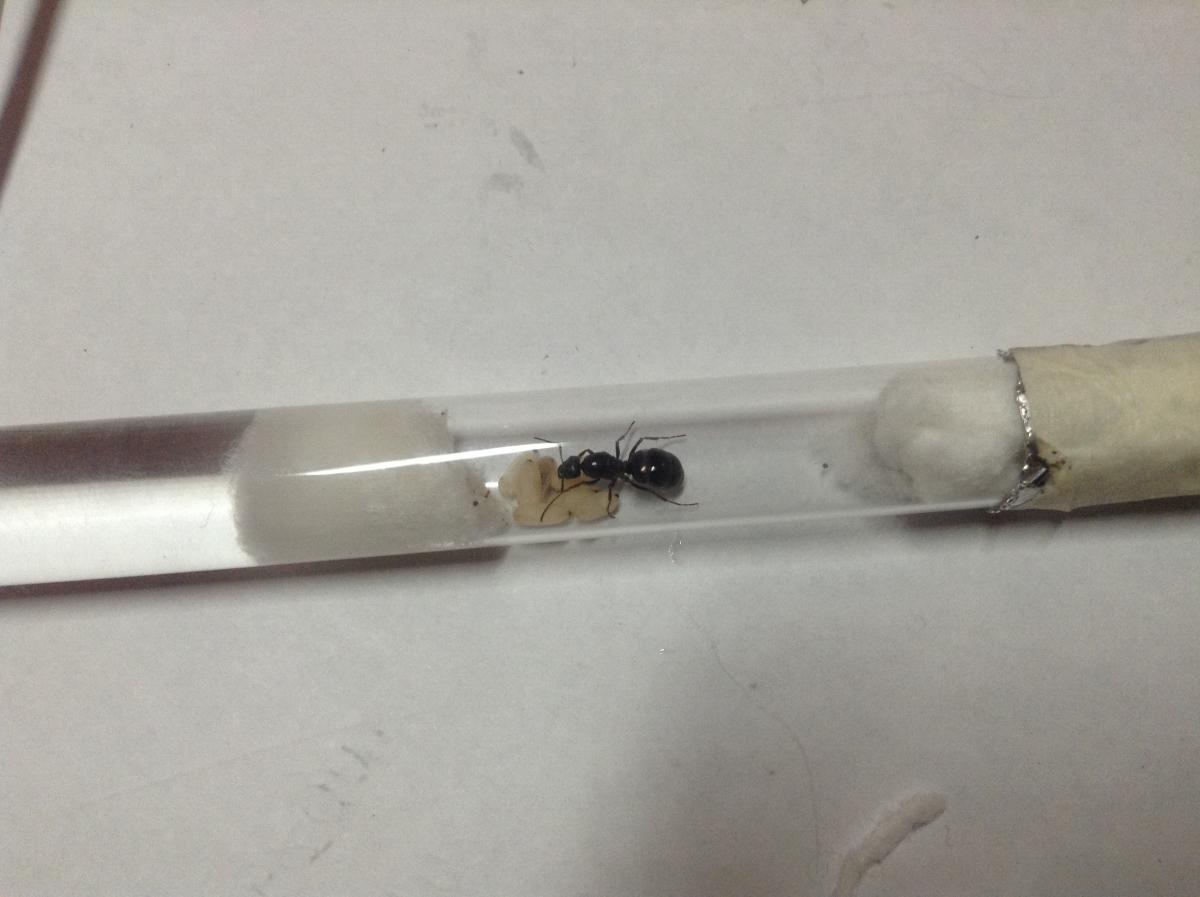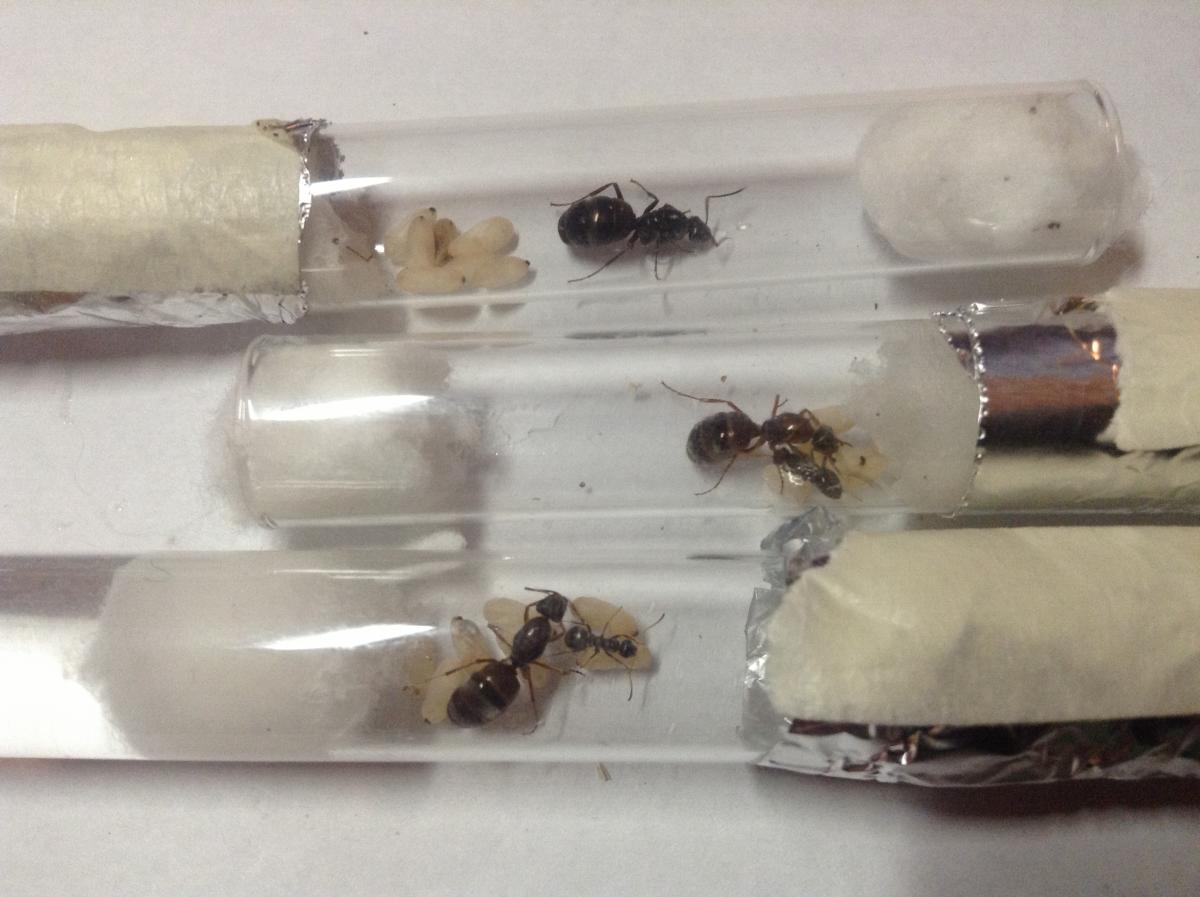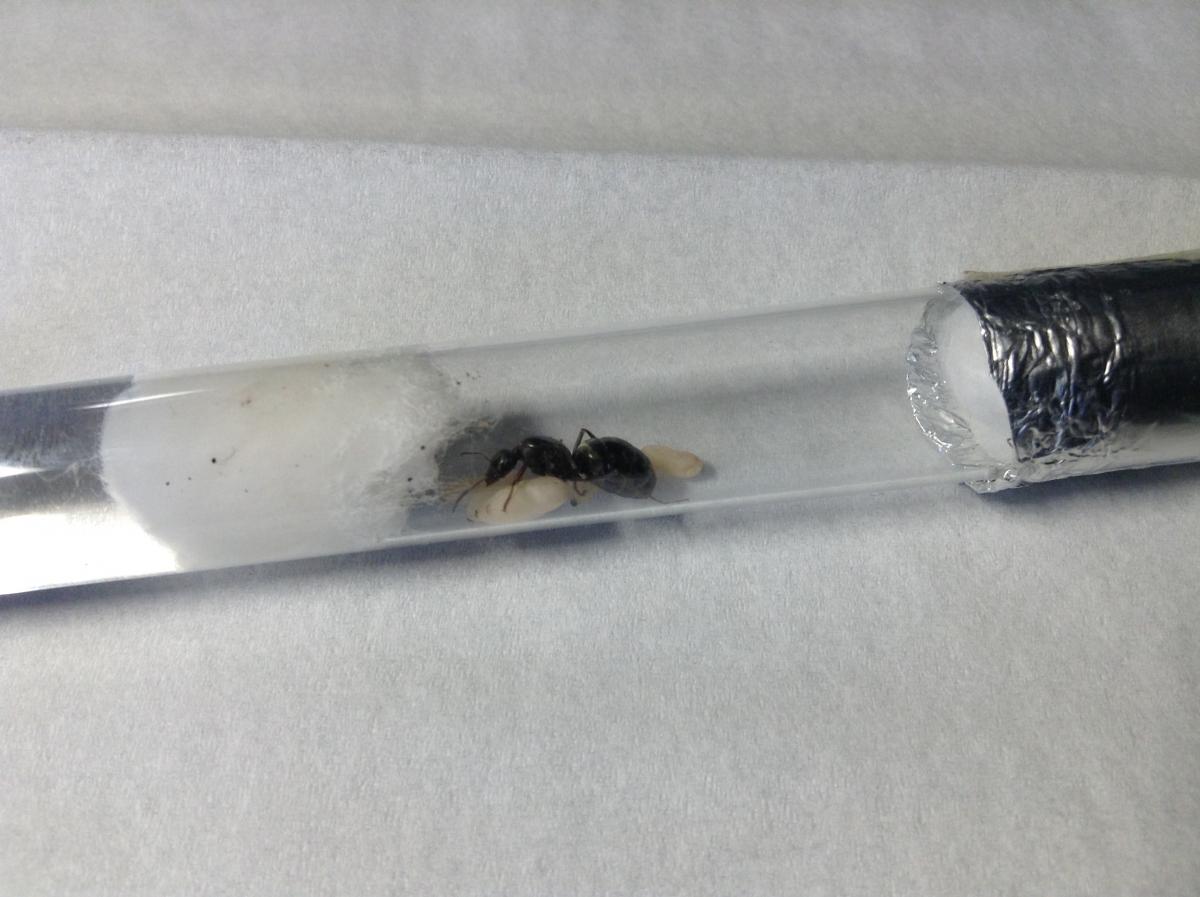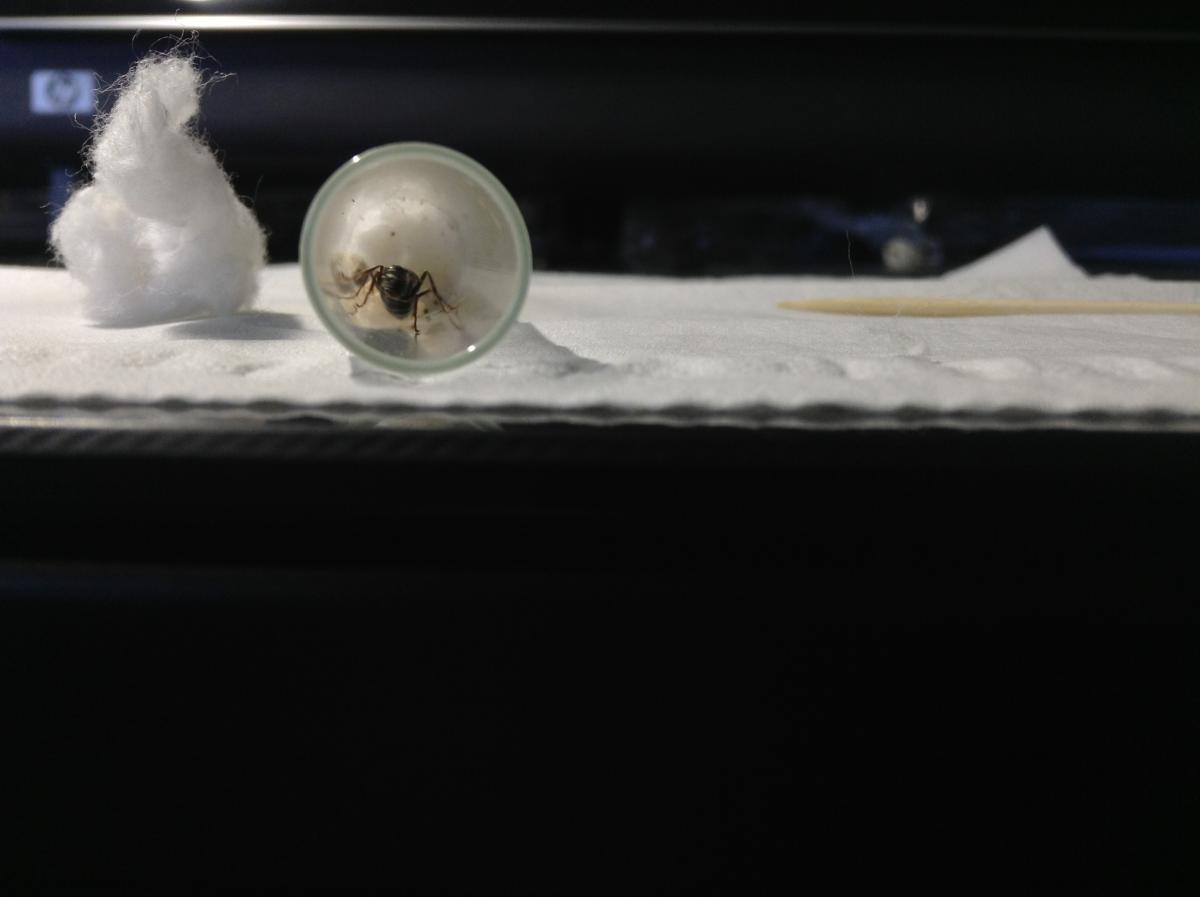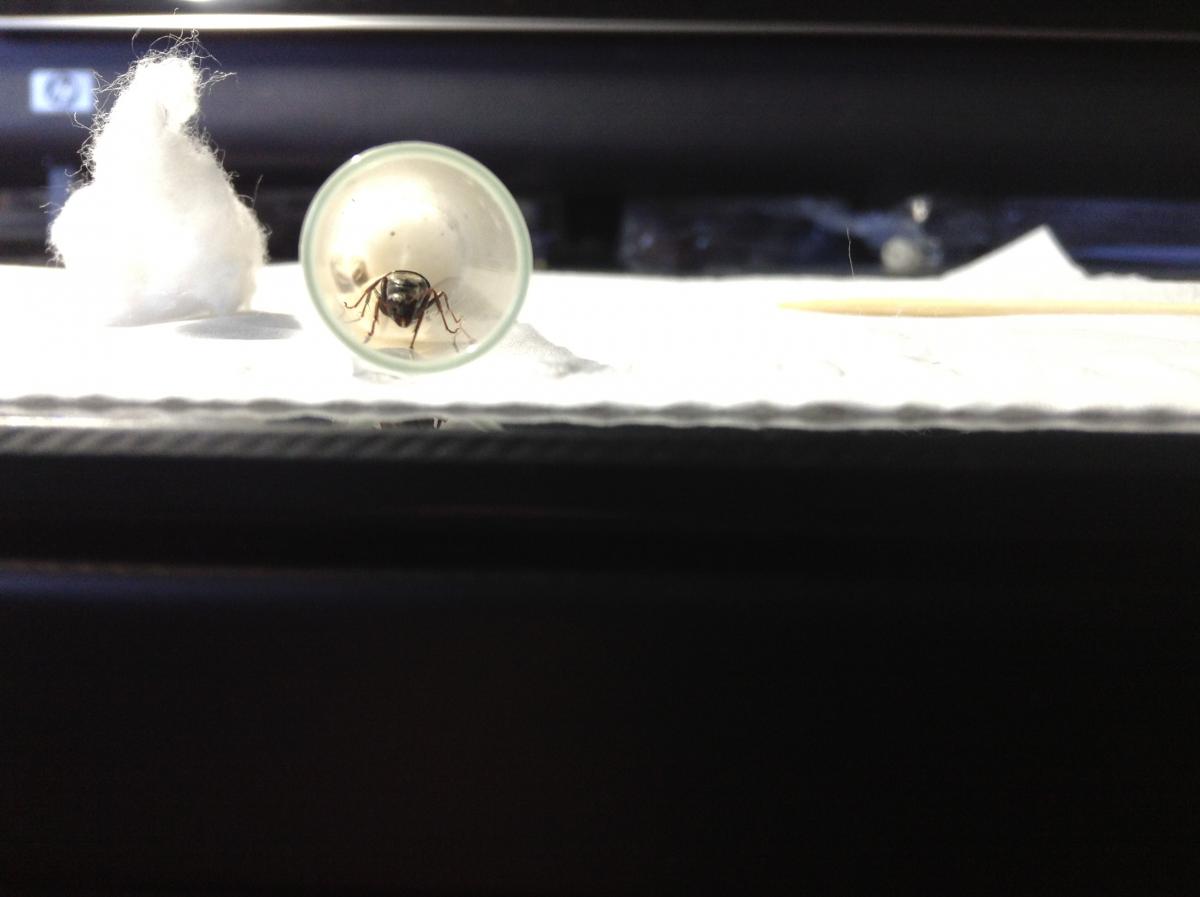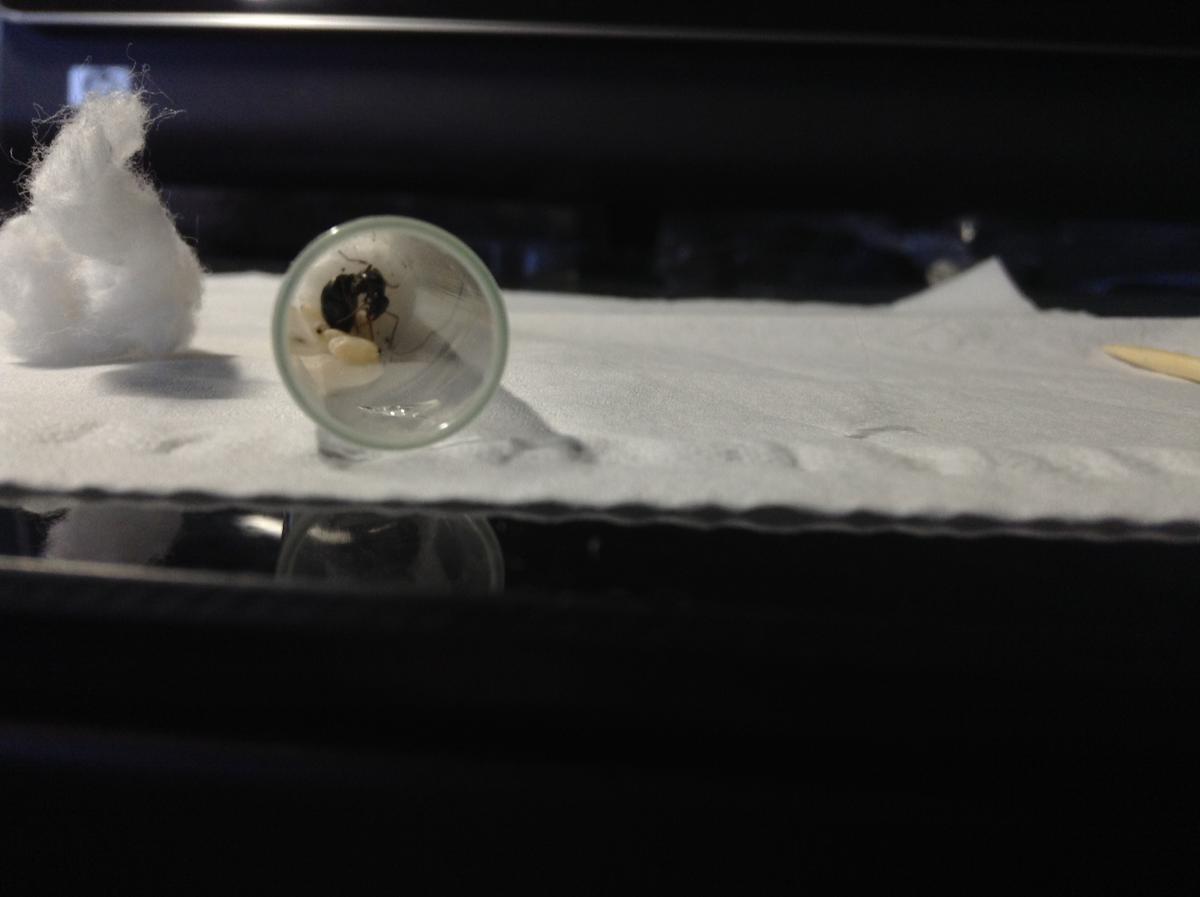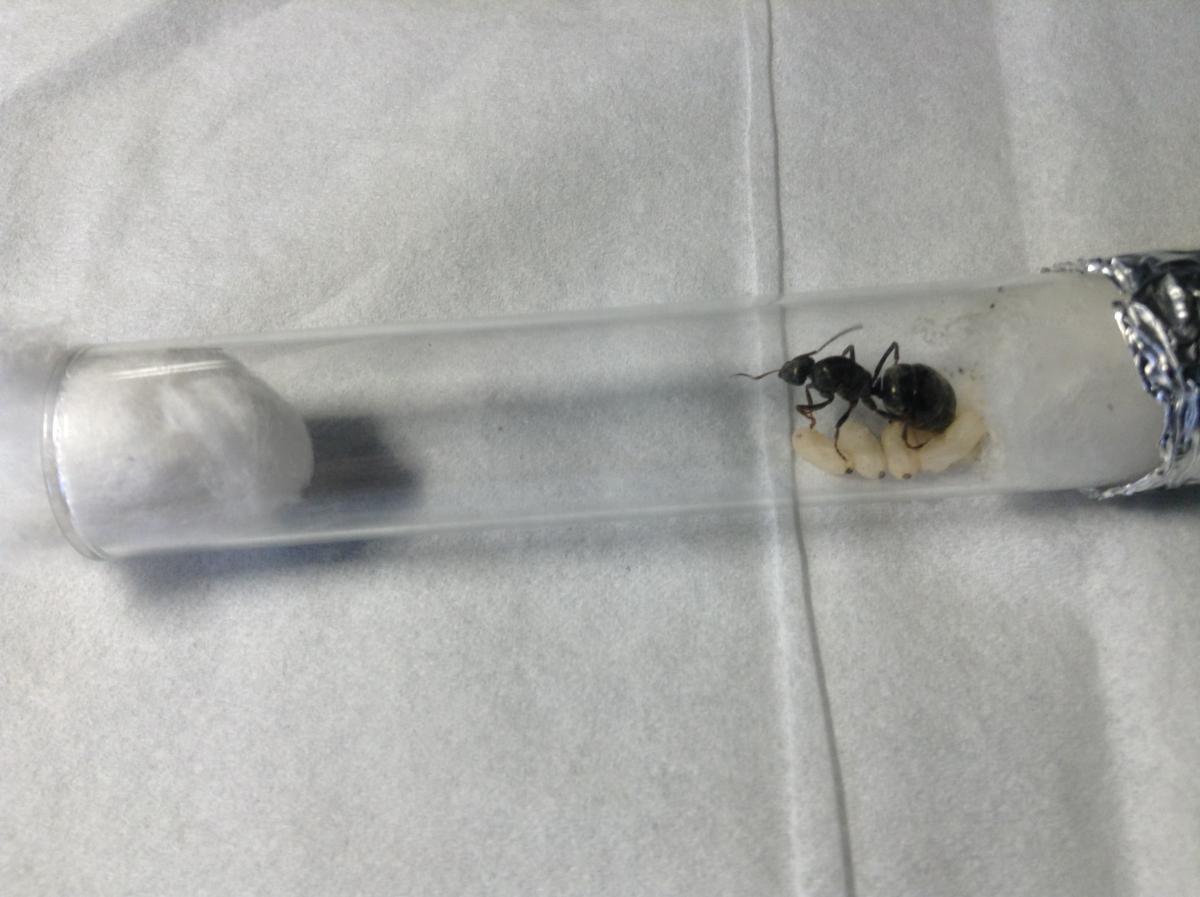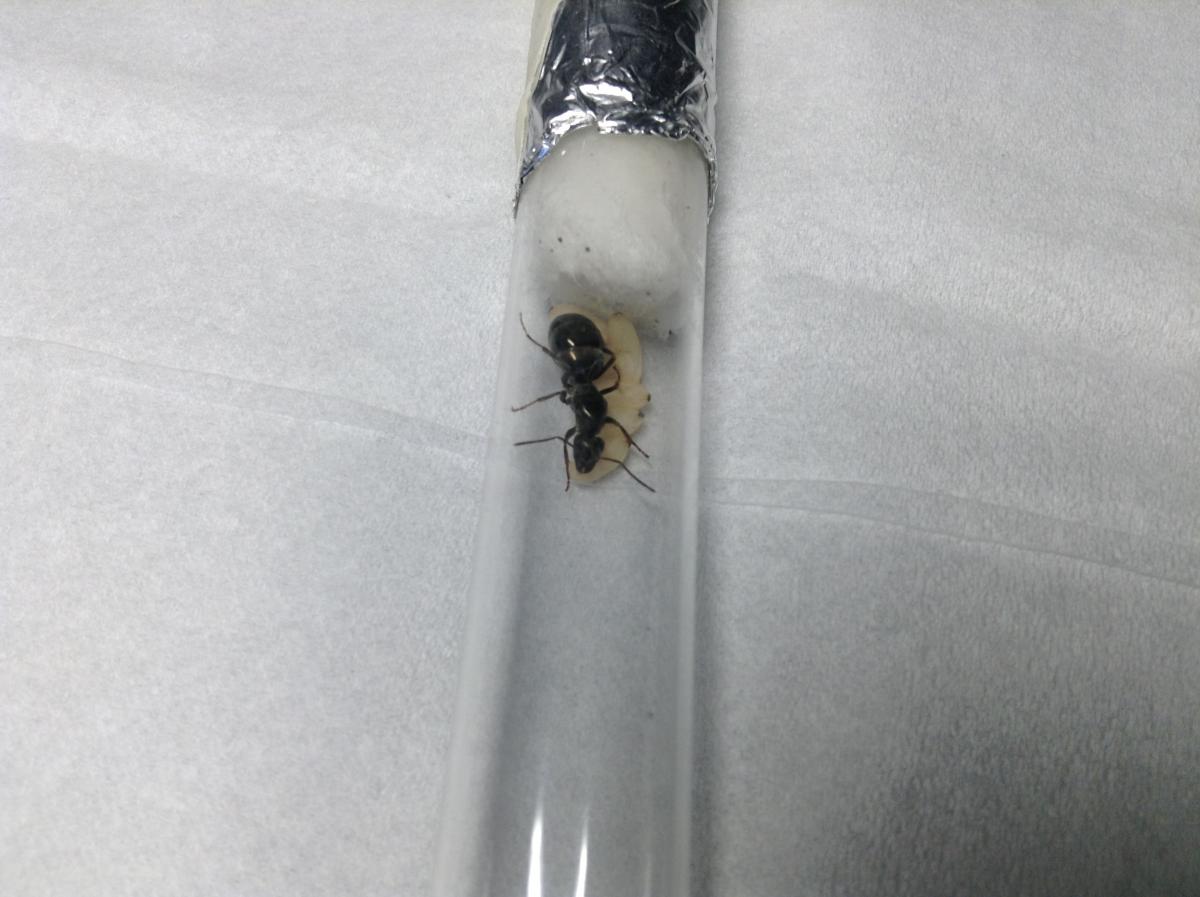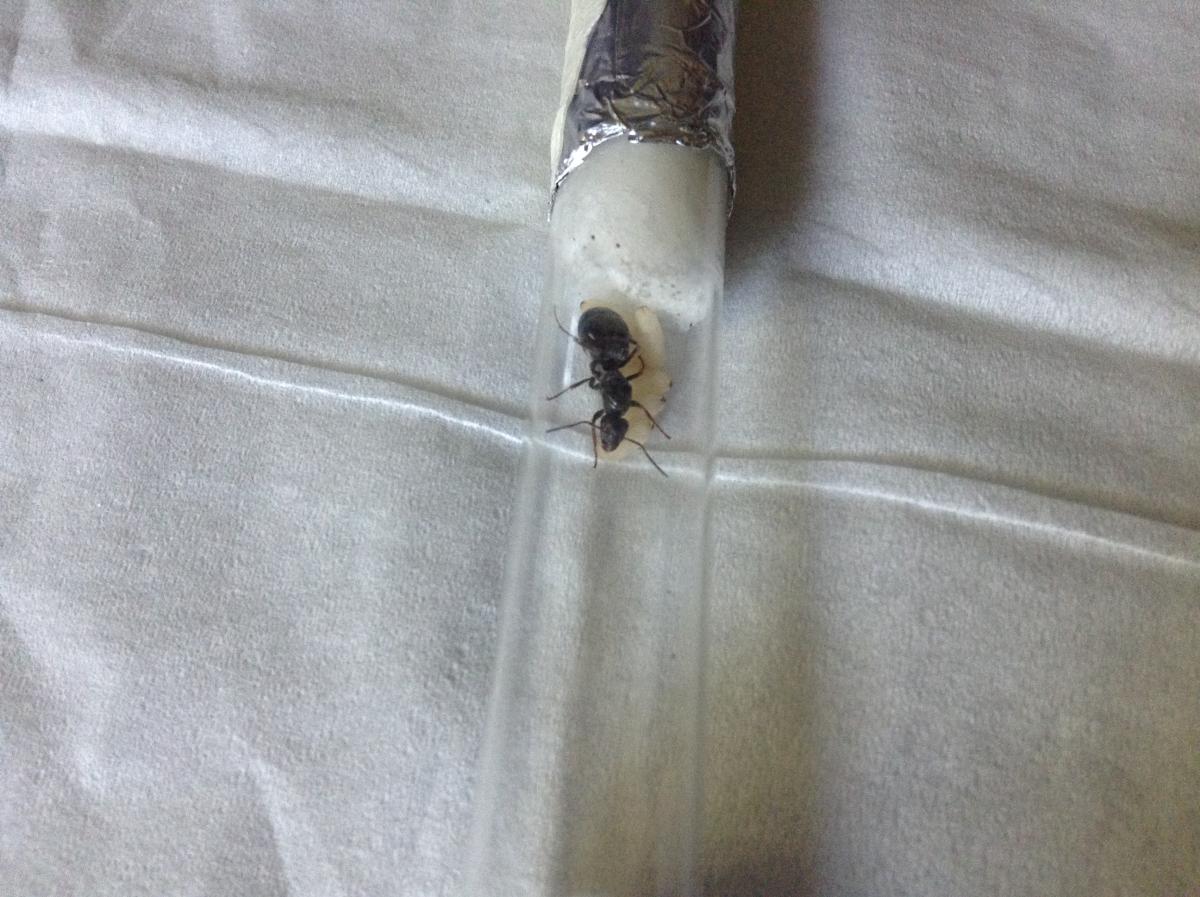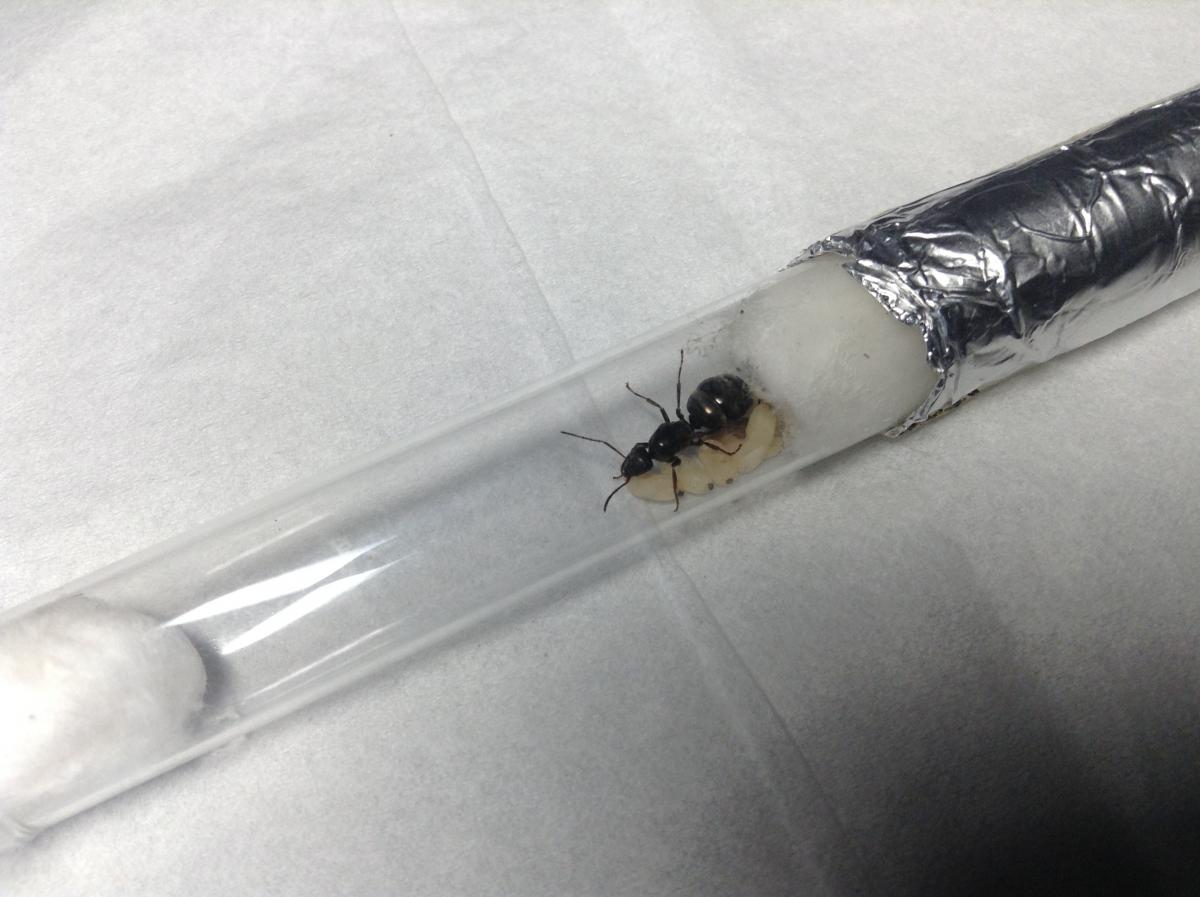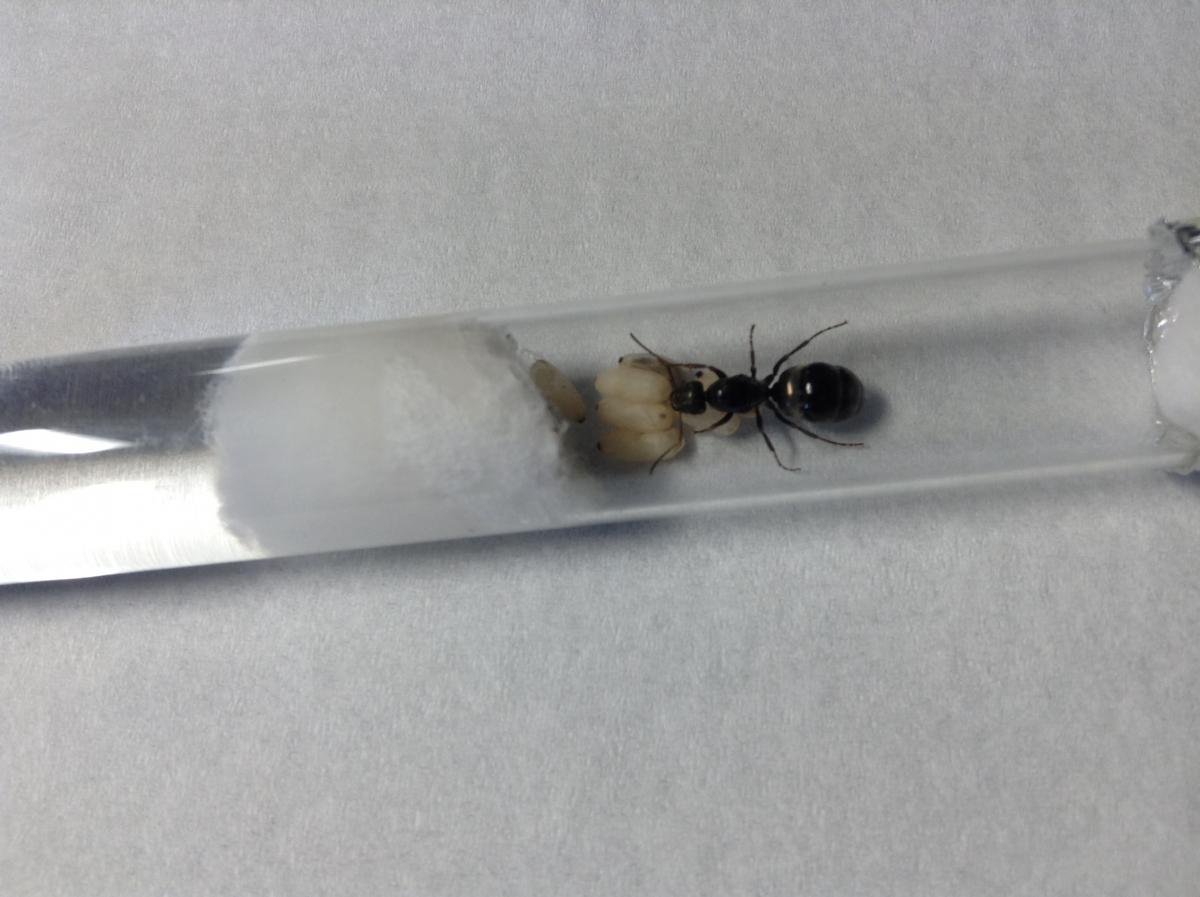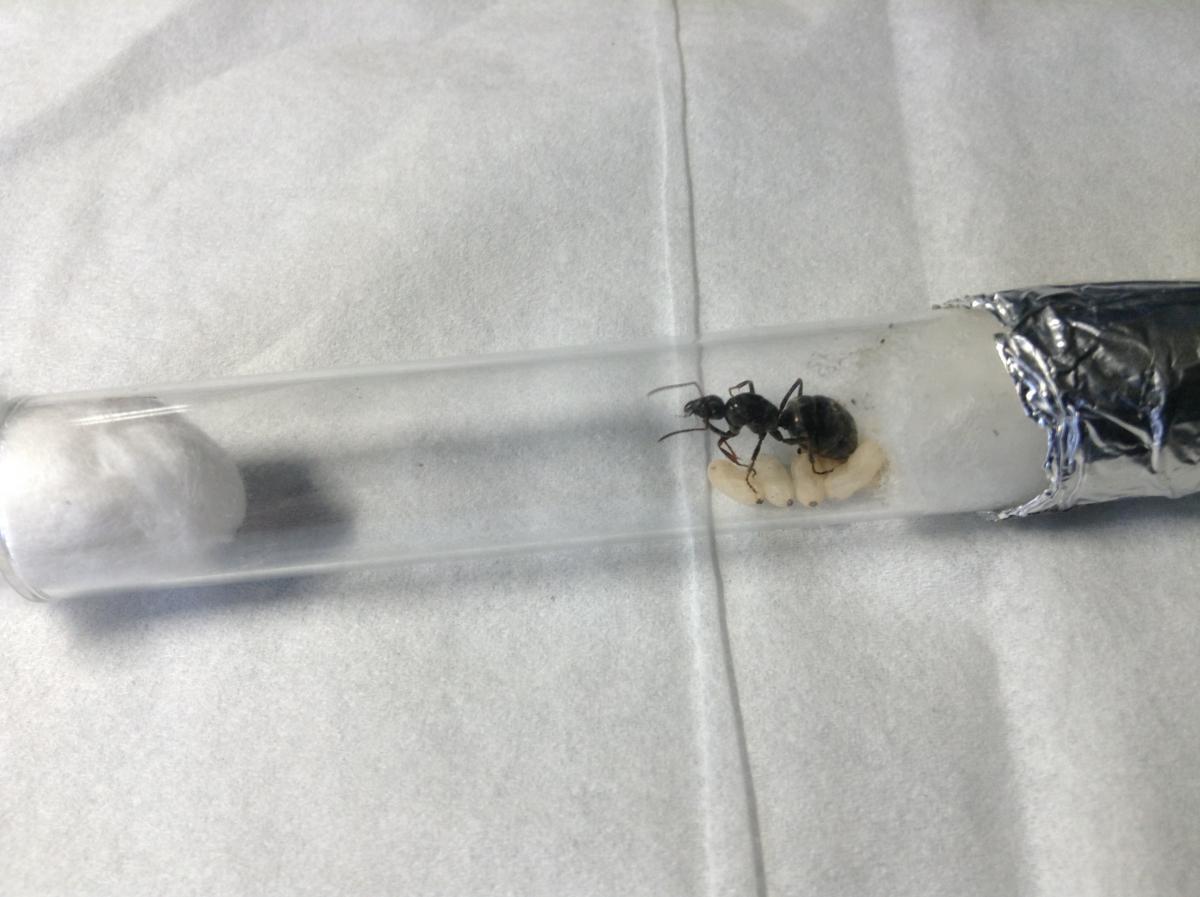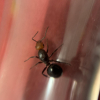1. Location of collection: Okanagan Lake, BC,Canada
2. Date of collection: August,11th and August 12th
3. Habitat of collection: Dry and rocky
4. Length (from head to gaster): around 11mm
5. Color, hue, pattern and texture: Greyish black gaster, dark orange-red thorax and topof head is dark grey while bottom is orange.
6. Distinguishing characteristics: Not a lot of parasitic features, no large head/jaws and no small gaster.
7. Anything else distinctive: They are very aggressive and readily shoot acid. It's more like a droplet I think rather than a spray.
8. Nest description: Their hosts are those within the Fusca complex.
Found these 2 Formica dealates at Okanagan Lake. At first I doubted they we're parasitic until I found a bunch of Formica fusca chambers with nanitics and I thought they might have flown at this time to take over these chambers. So before I left I grab some pupae from F.argentae (not host but whatever) and they accepted it.
Edited by LC3, August 21 2015 - 10:20 AM.




